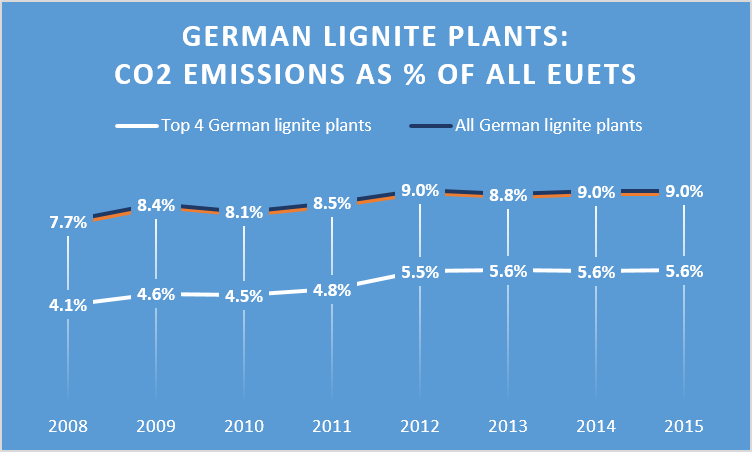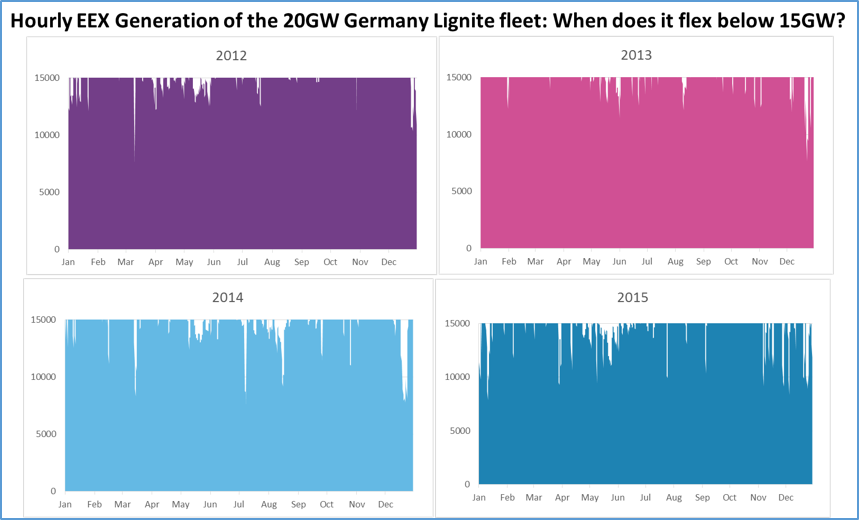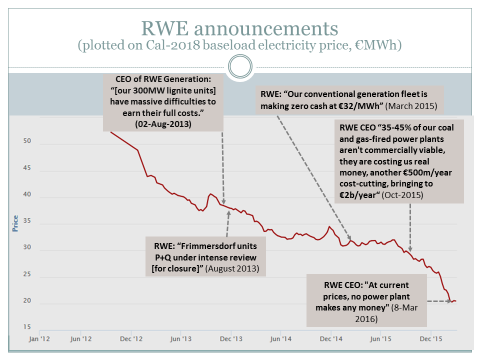Today, the European Commission published the preliminary 2015 emissions data for all ~12,000 industrial installations covered under the EU’s Emissions Trading Scheme.
Four out of five of the biggest polluters in Europe are still German lignite plants. Three of these are owned by RWE.
There are two new entrants to the list – a Polish hard coal plant, and a Bulgarian lignite plant.
The biggest riser was RWE’s Weisweiler, which increased its emissions by 8% to 18.1 million tonnes of CO2.
The biggest faller was Drax, falling by 21% to 13.2 million tonnes, as it continued its conversion to burn biomass, which is rated as zero-CO2 under the EU ETS rules.

Figure 1: Top 10 European Polluters for 2015
Dave Jones, Sandbag analyst comments:
In Germany, a handful of huge, inefficient, lignite plants are still running constantly at almost full capacity. They are displacing electricity production at much cleaner power plants, not only in Germany, but across Europe. If there are any quick-wins in reducing CO2 emissions in Europe, it is for these unprofitable German lignite units to close sooner rather than later. This will ensure that Germany’s Energiewende makes good on its incredible renewables growth.
We calculate that these top 4 German lignite power plants accounted for 5.6% of all EUETS emissions in 2015, and total German lignite still accounted for 9.0% of all EUETS emissions. Despite a huge surge in renewables generation, this proportion has been relatively unchanged (Figure 2).

Figure 2: EUETS calculations by Sandbag
The reason why emissions remain unchanged is that German lignite generation is still running near capacity for most hours. Sandbag has produced a graphic (Figure 3) showing how just how constant the generation of the German lignite fleet has been in the last 4 years.

Figure 3 EEX generation data by Sandbag
A major driver causing lignite to run as baseload is the increasing exports of German electricity to its neighbours (see figure 4). This is displacing much lower-carbon generation in neighbouring countries such as gas and even nuclear generation in some hours. This is in stark comparison to the UK, where the Carbon Price Floor has helped to make coal uneconomic. Today’s data for the UK shows growing renewables filling in for a massive collapse in coal generation, and a subsequent large drop in emissions.

Figure 4: Germany’s net electricity exports
What’s more, these German lignite plants are unprofitable: they are no longer making enough money from generation to cover their fixed costs. Sandbag pulled together a list of series of quotes from RWE, and plotted them against German power price (Figure 5). Even when power price was €38/MWh, RWE said their older lignite plants struggled to be profitable. On 8-March this year, when power price had sunk to just €20/MWh, Peter Terium declared no power plant makes any money.

Figure 5 Sandbag collection of RWE quotes
Notes:
European Commission data for 2015 emissions was published today at 1200CEST at this link.
Sandbag will release further details today, including an analysis pack showing key trends and stories of the emissions data on our website.
Recent Comments